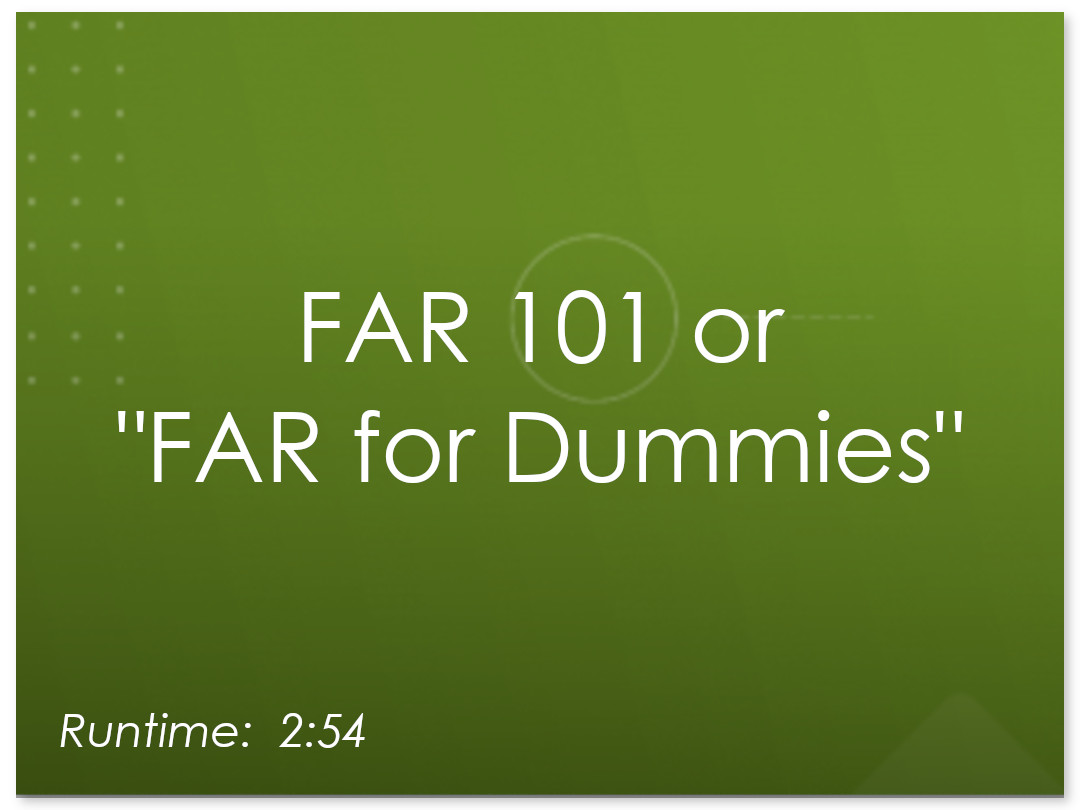FAR 12 vs. FAR 15: A Tale of Two Documentation Requirements
It’s easy to figure out the value of an egg; you look at grocery ads, shop around, and determine the going rate. But what if what you want isn’t just any ordinary egg; you’ve heard the eggs from Farmer Gus are nothing short of orgasmic. His chickens are massaged daily, feast on the finest organic mealworms and kale, and produce fluffy golden yolks that melt in your mouth. What would you pay for an extraordinary dozen that can’t be found anywhere else? If you were the government, you would consult your latest edition of the Federal Acquisition Regulations (FAR).
Government contracts are subject to a slew of regulations which govern acquisitions by executive branch agencies. The lion’s share of these are located in the FAR, codified in Title 48 of the Federal Regulations. The FAR ensures that the government, and therefore, taxpayers, are getting the best value for their money by delineating a set of rules that govern solicitation and award of non-competitive government contracts. These rules are contained in Part 15, which we’ll cover in more detail below.
But the competitive negotiation process can be long and unnecessarily cumbersome for things like an ordinary dozen of eggs. Under Part 12, the FAR offers a simple solution to our ordinary egg purchasing conundrum. It’s the simplicity of the FAR 12 solution that is enticing to contractors and often leads to audit findings.
Part 12: Acquisition of Commercial Items
Part 12 of the FAR ensures that contractors and government alike avoid the time-consuming and formal process of a fully negotiated procurement process for (1) purchases of a relatively small value, or (2) where the goods and services are already available in general commerce. For commercial items which adhere to the definition set forth in FAR 2.101, the purchasing process is exempted from some of the traditional documentation requirements prescribed under FAR 15.
The underlying presumption behind FAR Part 12 is that market efficiencies inherent to publicly available commercial items will ensure the goods and services are obtained at a fair and reasonable price. For example, our dozen ordinary eggs are already sold “in substantial quantities in the commercial marketplace,” so it would be wasteful and unnecessary to conduct a lengthy and prolonged source selection process to figure out the fair price for ordinary eggs; the marketplace tells us that $3.99 per dozen is the fair and reasonable price.
Part 15: Non-Competitive Contract Negotiation and Acquisition
For goods that are unique and not subject to market forces, i.e. Farmer Gus’s special eggs, a more rigorous procedure is required to ensure the goods are being obtained at a fair and reasonable price and that the goods obtained are of sufficient quality and value to meet the government’s need. This process is outlined in Part 15, which lays out the foundational rules for negotiating, evaluating, and awarding such contracts.
Even though a more rigorous evaluation process is required for high value or non-commercial items, Part 15 still strives to minimize the complexity of the solicitation to the greatest extent possible. At the outset of the solicitation, potential vendors are invited into a two-way communication process with the government; vendors offer preliminary RFPs that inform the government’s formation of the final RFP requirements. Through this interactive process, the playing field is narrowed to a select group of vendors who then submit proposals based on the refinements made from the preliminary solicitation and responses. In this way, the burden of preparation and review is significantly mitigated, thus ensuring that sufficient value is obtained by the government through the least administratively burdensome manner.
Documenting Commercial Availability or Certified Cost and Pricing Data
Whether providing goods under Part 12 or Part 15, contractors face significant documentation hurdles specific to the requirements of each Part. However, between the two, FAR 15 is exceedingly onerous. Under FAR 15, for awards >=$2M of non-commercial items or services that could not be competed, contractors must provide certified cost or pricing data. This means giving the government the keys to the castle. The government (or a Prime Contractor working on their behalf,) will review and validate every element of cost in the proposal, down to the timesheets employees use to sign in and out each day.
For Part 12, contractors must provide sufficient evidence that the item meets the FAR’s definition of “commercial.” There’s no stated minimum value in the FAR to which this requirement applies. Moreover, these documentation burdens apply at all tiers, such that prime contractors must ensure that their sub-contracts meet the same standards.
Fortunately, newly developed technologies are now available to tackle these documentation burdens. SpendLogic has developed the world’s first automated commercial item determination tool. If you are interested in learning more, check out our training video series, our Commercialty Module, or contact us today.




 SpendFile Documentation Folders
SpendFile Documentation Folders